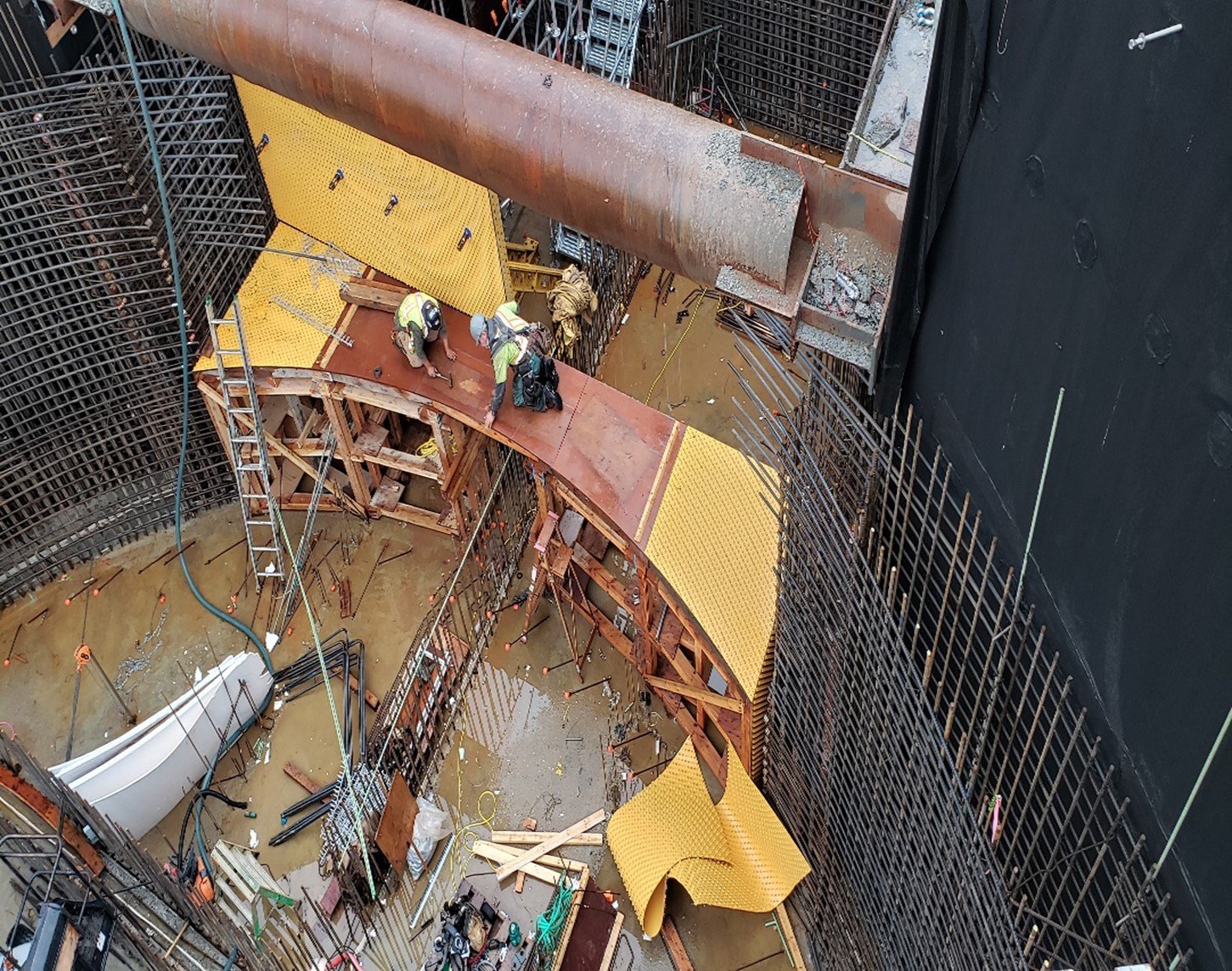Precast Concrete Lining vs. Cast-in-Place Concrete Lining
When it comes to concrete lining, understanding the fundamental differences between precast and cast-in-place methods is essential for selecting the appropriate technique for your project.
Precast Concrete involves manufacturing concrete elements in a controlled factory environment and transporting them to the construction site for installation. This method offers several benefits:
Quality Control: The controlled environment ensures consistent quality and strength of the concrete.
Speed of Installation: Precast elements can be quickly assembled on-site, reducing construction time.
Durability: Advanced materials and technologies used in precast linings enhance resistance to environmental stressors.
However, precast concrete lining may involve higher initial transportation and handling costs due to the logistics of moving large, heavy components to the site.
Cast-in-Place Concrete, involves pouring concrete directly into molds/formwork on-site. This method offers:
Flexibility: It can be customized to fit complex shapes and configurations that are difficult to achieve with precast elements.
Cost Efficiency: It typically has lower initial material and transportation costs.
Seamless Integration: This method allows for continuous construction, seamlessly integrating with existing structures.
However, cast-in-place lining can be more susceptible to environmental conditions during curing, potentially affecting its final strength and durability.
Installing Concrete Protective Liner: Precast vs. Cast-in-Place
The installation of concrete protective liners differs significantly between precast and cast-in-place methods, affecting both the process and the final outcome.
Precast Concrete Lining with Protective Liners:
Factory Application: Protective liners are applied at the precast facility on the mold/core before the concrete is cast precast. Fully lined components are then transported to the site. This ensures precision and adherence to quality standards. Many precast components can be made with custom tubes to reduce production time and increase quality. This is most common with microtunnel/jacking pipe and manhole barrels.
Cast-in-Place Concrete Lining with Protective Liners:
On-Site Application: Protective liners are installed on-site, often requiring meticulous preparation to ensure the liner adheres correctly to the formwork prior to pouring concrete.
Handling Complex Shapes: Cast-in-place methods are particularly advantageous for projects with complex geometries, allowing the liner to be custom-fitted and secured in place as the concrete sets. Examples include wastewater treatment plant digesters and underground chambers.
Cast-in-Place Concrete Lining with Protective Liners:
On-Site Application: Protective liners are installed on-site, often requiring meticulous preparation to ensure the liner adheres correctly to the formwork prior to pouring concrete.
Handling Complex Shapes: Cast-in-place methods are particularly advantageous for projects with complex geometries, allowing the liner to be custom-fitted and secured in place as the concrete sets. Examples include wastewater treatment plant digesters and underground chambers.
Both methods have distinct advantages and challenges. Precast lining allows for high-quality control and rapid installation but requires careful handling and precise joint sealing on-site. Be careful who you hire to “seal” (extrusion weld) the precast pieces once installed. Cast-in-place lining offers flexibility and cost efficiency but demands careful on-site conditions management to ensure proper curing and liner adhesion. General contractors should not attempt to clad formwork on their own. HDPE is a thermoplastic that is subject to wide expansion and contraction swings.



